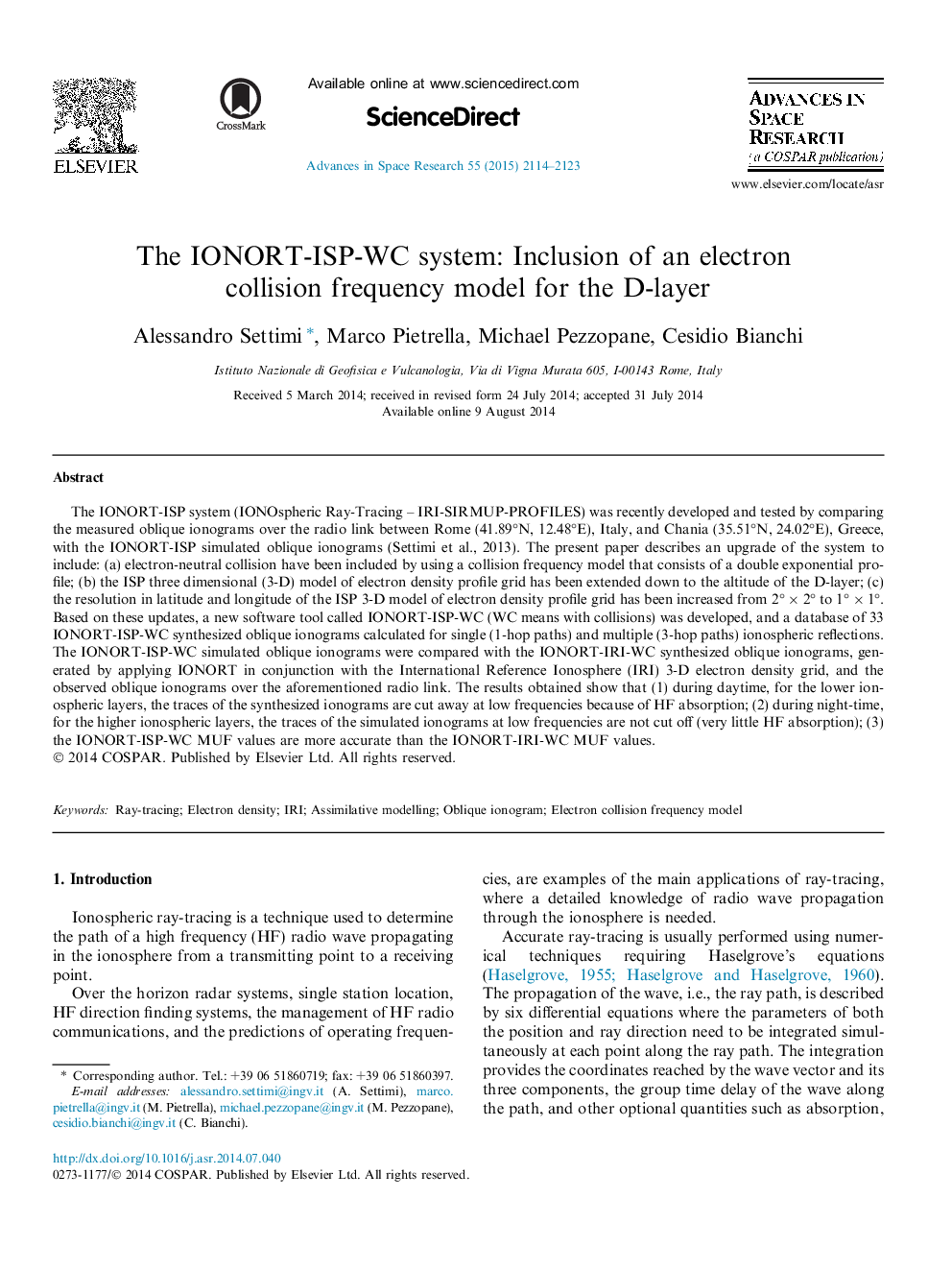| Article ID | Journal | Published Year | Pages | File Type |
|---|---|---|---|---|
| 1764047 | Advances in Space Research | 2015 | 10 Pages |
Abstract
The IONORT-ISP system (IONOspheric Ray-Tracing - IRI-SIRMUP-PROFILES) was recently developed and tested by comparing the measured oblique ionograms over the radio link between Rome (41.89°N, 12.48°E), Italy, and Chania (35.51°N, 24.02°E), Greece, with the IONORT-ISP simulated oblique ionograms (Settimi et al., 2013). The present paper describes an upgrade of the system to include: (a) electron-neutral collision have been included by using a collision frequency model that consists of a double exponential profile; (b) the ISP three dimensional (3-D) model of electron density profile grid has been extended down to the altitude of the D-layer; (c) the resolution in latitude and longitude of the ISP 3-D model of electron density profile grid has been increased from 2° Ã 2° to 1° Ã 1°. Based on these updates, a new software tool called IONORT-ISP-WC (WC means with collisions) was developed, and a database of 33 IONORT-ISP-WC synthesized oblique ionograms calculated for single (1-hop paths) and multiple (3-hop paths) ionospheric reflections. The IONORT-ISP-WC simulated oblique ionograms were compared with the IONORT-IRI-WC synthesized oblique ionograms, generated by applying IONORT in conjunction with the International Reference Ionosphere (IRI) 3-D electron density grid, and the observed oblique ionograms over the aforementioned radio link. The results obtained show that (1) during daytime, for the lower ionospheric layers, the traces of the synthesized ionograms are cut away at low frequencies because of HF absorption; (2) during night-time, for the higher ionospheric layers, the traces of the simulated ionograms at low frequencies are not cut off (very little HF absorption); (3) the IONORT-ISP-WC MUF values are more accurate than the IONORT-IRI-WC MUF values.
Keywords
Related Topics
Physical Sciences and Engineering
Earth and Planetary Sciences
Space and Planetary Science
Authors
Alessandro Settimi, Marco Pietrella, Michael Pezzopane, Cesidio Bianchi,
